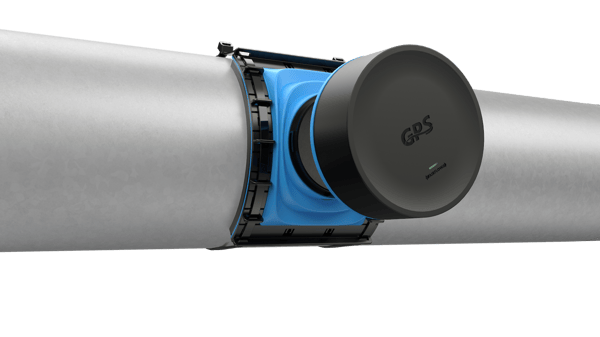01/31/22

GPS® LAUNCHES NEW IN-DUCT AIR IONIZATION SYSTEM, EXTENDING PORTFOLIO OF NEEDLEPOINT BIPOLAR IONIZATION TECHNOLOGY PRODUCTS
The DM-2™ offers enhanced versatility with downstream positioning, easier installations and modifications, delivering better ion density for indoor spaces
LAS VEGAS and CHARLOTTE, N.C., Jan. 31, 2022 -- GPS® announced today the launch of the DM-2™, the most recent addition to the company’s air-cleaning needlepoint bipolar ionization (NPBI™) technology systems that makes optimizing ionization easier. The announcement was made at the AHR Expo being held in Las Vegas.
The DM-2’s low-profile design allows for mounting closer to the occupied space. Additionally, the DM-2’s design also ensures the ion emitters are oriented correctly within the airflow. These features provide numerous benefits, including optimizing the delivery of ionization to targeted areas within a building, helping improve indoor air quality.
The DM-2 is ideal for large buildings with complex duct set-ups and zone systems that are downstream of a Variable Air Volume (VAV) box, making ionizing multiple rooms more effective.
This downstream solution will be further supported by the DM-2’s quick-turn saddle mount adapter, which simplifies installation and allows installers to place the ionizer in an optimal position. When combined with this soon-to-be-released adapter, the duct-mounted, maintenance-free DM-2 will fit all standard size round or rectangular ducts, in stark contrast to other offerings in the space that often require unique adapters for each configuration of a duct. Users can mount the DM-2 almost anywhere, providing flexibility and freedom.
“Customers can change the installation point as needed and mount closer to the space versus the blower, allowing for improved ionization within the space,” said Garry Fee, director of product management for GPS. “We designed the DM-2 with customers in mind, offering unrivaled flexibility and additional mounting options that solve for complexity and save both time and money.”
The DM-2 air ionization system builds on the success of GPS’ existing line of innovative products, offering many of the same benefits — including multi-voltage input, auto-cleaning, and carbon fiber brush emitters. Like all GPS branded devices, the DM-2 is certified to UL’s 2998 “zero ozone” emission standard, which is below quantifiable levels of 5ppb (parts per billion).
The DM-2 system utilizes GPS’ patented NPBI technology to help clean the air by reducing airborne particles including certain odors, viruses and bacteria. Particles like dust, dander, smoke and even viruses and bacteria all can be suspended in the air. NPBI technology creates and releases ions into the airstream using an existing HVAC system as the delivery method. When these ions disperse throughout a space, they seek out and form bonds with particles in the air through a process called agglomeration. During this process, particles begin to cluster together and are thus easier to filter out of the air. Agglomeration can create an environment that enables the reduction of certain harmful viruses and bacteria without introducing harmful levels of ozone or other byproducts.
For technical specifications of the DM-2 and more information on GPS’ NPBI technology, please visit gpsair.com.
ABOUT GPS
Since its founding in 2008, GPS’ NBPI technology has been installed in thousands of locations, including research labs, healthcare facilities, schools, universities and airports. NPBI uses a unique and patented low energy, soft ionization technology application that works in concert with HVAC systems as part of a multi-layered approach to help reduce airborne particles and improve indoor air quality. GPS is one of the only manufacturers in the world to offer UL 2998 certification, UL’s stringent zero ozone emissions safety standard, across its entire brand portfolio. To learn more, visit gpsair.com.
GPS technology has demonstrated a reduction of certain viruses and bacteria like SARS-CoV-2, E-Coli, and RSV in laboratory settings. Please see www.gpsair.com/third-party-testing for more information. GPS uses multiple data points to formulate performance validation statements. GPS technology is used in a wide range of applications across diverse environmental conditions. Since locations will vary, clients should evaluate their individual application and environmental conditions when making an assessment regarding the technology’s potential benefits. The GPS products have not been evaluated by the FDA as medical devices and, therefore, are not intended to treat, cure, or prevent infections or diseases caused by certain viruses or bacteria. The use of this technology is not intended to take the place of reasonable precautions to prevent the transmission of disease. It is important to comply with all applicable public health laws and guidelines issued by federal, state, and local governments and health authorities as well as official guidance published by the Centers for Disease Control and Prevention (CDC), including but not limited to social distancing, hand hygiene, cough etiquette, and the use of face masks.